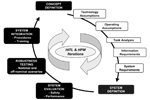 |
|
Human-centered system design requires a clear understanding of the user’s goals and the system that is being used. During the design process, many choices are made that affect the final design – design rationale and design knowledge capture tools allow the system designer to document the design space. To successfully field a system design, during the design process the designer must ensure that the system is robust to both typical and atypical operating scenarios. This research program explores methodologies and tools for creating effective “human-centered” systems. |
| |
|
|
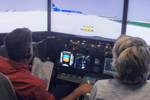 |
|
As NextGen surface trajectory-based operations (STBO) are developed, the requirements for more precise aircraft control and the need to monitor speed and/or required time of arrival (RTA) performance will place additional demands on the flight crew. This research program has developed and evaluated a flight deck “error-nulling” display/algorithm that allows pilots to comply accurately with STBO RTAs. Further research has investigated the interaction of NextGen STBO tasks on NextGen departure task requirements. |
| |
|
|
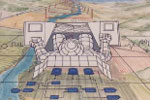 |
|
The goal of Human Performance Modeling is to develop predictive modeling capabilities to identify error vulnerabilities in human-system operations. Human-error assessment methodologies that allow system designs and procedures to be analyzed for error susceptibility are being developed and validated. Modeling efforts have analyzed the impacts of operations including: Approach and landing scenarios with augmented displays (Synthetic Vision Systems); NextGen Closely Spaced Parallel Approaches (CSPA); and, Single-Pilot Operations (SPO) |
| |
|
|
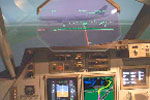 |
|
T-NASA is a suite of cockpit navigation displays that is comprised of a scene-linked head-up display (HUD), electronic moving maps (EMMs), and directional auditory alerts. The system was developed following a human-centered design and analysis process that included over 300 pilots. .
|
| |
|
|
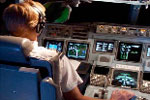 |
|
These research themes investigated:
1) Head-Up Display (HUD) designs that minimize potential problems associated with operator attention such as attentional tunneling or cognitive capture;
2) Human performance issues related to night vision devices, sensor imagery devices, and infrared technologies; and,
3) Design issues and display usage issues with head-down panel mounted displays. |
| |
|
|
 |
 |
 |
|
|